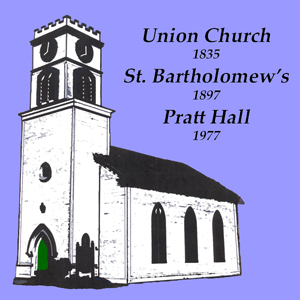
An Abbreviated History of Montgomery
Compiled by Bill Branthoover and Scott Perry

 |
Montgomery
Historical Society An Abbreviated History of Montgomery Compiled by Bill Branthoover and Scott Perry |
 |
1738: Revolutionary War General Richard Montgomery is born, paving the way for Montgomerys in Vermont and Alabama.
1780: The town of Montgomery is granted by Vermont Legislature.
1789: The Town Charter is approved by Governor Chittenden and the Executive Council.
1793: Captain Joshua Clapp moves from Worcester Co., Mass. to Montgomery. Town's first child, Joel Clapp, is born.
1800: Census shows 34 people living in Montgomery.
1802: First town government is elected. Samuel Barnard chosen Town Clerk.
1803: Joshua Clapp becomes first town representative to the Legislature.
1804-6: Montgomery raises funds to start a school.
1805: Vermont Legislature passes an act incorporating the Boston and Montreal Turnpike Company and laying the groundwork for the Hazen Road.
1810: Census shows 237 residents in town.
1812: The first post office is established in Montgomery.
1817: Congregationalist Church organized.
1819: Episcopal Church organized
1820: The population reaches 307. Baptist Church organized.
1828: Methodist Church organized.
1844: First factory for the manufacture of sap buckets and butter tubs established. Butter tub factories and lumber concerns of all types flourish throughout the second half of the nineteenth century.
1855: First Catholic services held in private home.
1863: The present Longley Bridge (also known as Head Bridge and Harnois Bridge) is built.
1865: School population reaches 426.
1873: Village store becomes Parker Store
1875: Hopkins Bridge is built.
1877: Montgomery has 12 school districts.
1883: Comstock, Hectorville, Hutchins, and Creamery Bridges are built.
1890: Fuller Bridge is built.
1891: A post office is established in Black Falls. It is discontinued 3 years later.
1889: Smith's Spool and Bobbin Mill is destroyed by fire.
1898: A post office is established on Hill West, discontinued in 1901, resurrected in 1901 (about 3 months later) and discontinued again in 1903.
1899: The Hectorville Bridge is moved from the Village to Hectorville.
1900: Town population peaks at 1,876 persons.
1902: Evangelical Advent Church built on Hill West on land donated by Savannah and Joan Jewett.
1905: Four Corners schoolhouse burned.
1910: First telephone line established between St. Onges' and Henry Sylvester's.
1914: Hutchin's Mill struck by lightening and burned to ground.
1920: Town population declines to 1,608 persons.
1922: Flood
1926: A. Martell establishes Center's first (and only, until 1959) filling station (Socony), complete with auto sales and service, hardware, building materials, and farm equipment.
1927: Flood
1940: Town population continues decline to 1,208.
1947: Two schools -Village and Center- remain.
1950: Former Advent Church (reorganized under Nazarenes) sold for $325.
1953: 25 working dairy farms remain on West Hill / Hill West.
1962: Village School closes.
1970: Census puts town at population of 651.
1971: Montgomery School House, Inc. (toy factory) founded by Dan Woodward; opens in former Village school building
1974: Montgomery Historical Society formed, buys St Bartholemew’s Episcopal Church for $1.00.
1975: Eden asbestos mine sold to employees (many of whom are Montgomery residents).
1976: New Town Garage completed.
1979: Recreation Center field opens.
1982: Flood.
1984: Montgomery Village store burns.
1985: Historical Society's Pratt Hall bell tower restored.
1987: Montgomery Business Association (later Town) established.
1991: Seven working dairy farms remain in Montgomery.
1992: Flood.
1997: “The Montgomery Flood” hits July 9th.
2000: Census reported at 992.
2006: New School Addition to MES, just over $2.1 million.
2008: New Municipal Water System completed. Approximately a $4.5 million project . Montgomery bonds for just under $900,000.
2010: New Public Works Building completed for just under $600,000. Replaces Town Highway Garage.
2010: Census reported as 1,206.
2011: Tropical Storm Irene causes approximately $75,000 in dmages to Town infrastructure.